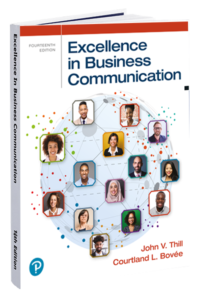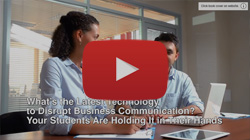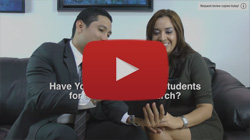Friction from outdated methods hinders business communication education, but a frictionless classroom empowers student success.
In today's fast-paced business world, communication is not just a skill; it's a superpower. The ability to articulate ideas clearly, persuade effectively, and collaborate seamlessly is a key differentiator for success. Yet, in many classrooms, the teaching of business communication can feel more like a struggle than a launchpad. Outdated methods, a disconnect between theory and practice, and a lack of clarity can create a frustrating "friction" that hinders both student engagement and effective learning.
Imagine a classroom where learning business communication is not just a chore, but a thrilling adventure. Imagine students energized by the relevance of their studies, empowered by practical application, and equipped with the digital tools they'll use daily. This is the vision of a "frictionless classroom" – a space where the barriers to mastering business communication are dismantled, and students emerge ready to thrive in the real world. This is not simply about improving educational efficiency; it's about unlocking the true potential of business communication education and empowering a new generation of confident, skilled communicators who are ready to lead.
The Roadblocks to Effective Business Communication
The challenges hindering the effective teaching of business communication are multifaceted and often deeply rooted in the way we approach education itself. Take a moment to picture a student struggling to see the relevance of a dusty textbook in an age of instant messaging and dynamic social media. Imagine a student bewildered by a lack of clarity around expectations or confused by an instructor's reliance on outdated tools. These are not isolated incidents; they are symptoms of a broader disconnect between traditional teaching methods and the realities of the modern business world.
The roadblocks to effective communication education are many, but they can be categorized as follows:
Outdated Course Materials: Many curricula cling to traditional communication formats like formal letters and memos, failing to reflect the reality of today's digital workplaces. This disconnect makes learning feel irrelevant and hinders engagement. Students may find themselves bored and unmotivated, unable to see how the skills they are learning will apply to their future careers. They might ask, "Why am I spending time learning how to write a formal memo when I'll be communicating primarily through email and social media in my professional life?" This disconnect between the curriculum and the real world erodes motivation and hinders true learning.
Misaligned Expectations and Communication: Fuzzy objectives, unclear instructions, and a lack of open communication between students and instructors create uncertainty and frustration. Students might feel lost, unsure of what is expected of them, or hesitant to ask for clarification, leading to misunderstandings and a lack of confidence in their abilities. This can also lead to a lack of trust between students and instructors, as students feel they are not being given the support they need to succeed.
Technological Gaps: The rapid pace of technological change often leaves students and instructors struggling to keep up. Students may be unfamiliar with the tools they will use in their careers, while instructors might not fully leverage the power of these tools in the classroom. The result can be a frustrating disconnect between the theoretical knowledge gained in class and the practical skills required in the modern workplace. Imagine a student struggling to create a professional presentation using video conferencing tools, only to discover they have never been taught how to use these essential technologies effectively.
Information Overload: A bombardment of theoretical concepts without sufficient time for practical application can leave students feeling overwhelmed and disengaged. This can lead to students struggling to retain information, feeling overwhelmed, and lacking the confidence to apply the concepts in real-world scenarios. Imagine a student trying to process complex communication models without the opportunity to practice these concepts in real-world scenarios.
The Theory-Practice Disconnect: Students often struggle to see how abstract communication models translate into real-world scenarios. Without practical experience, theoretical concepts can remain distant and ineffective. Students might find themselves unable to connect the dots between the textbook and their everyday lives, leading to a feeling of disconnect and a lack of motivation to truly master the material. Imagine a student learning about persuasion techniques without ever having the chance to craft a persuasive email or present a compelling argument to a group.
Building a Frictionless Classroom: A Path Forward
Eliminating friction in business communication education requires a fundamental shift in mindset and approach. Instead of clinging to outdated practices, educators must embrace the dynamic nature of the modern business world and equip students with the tools and skills they need to succeed. This requires a proactive and innovative approach to teaching and learning:
Embrace the Digital Revolution: Modernize curricula by emphasizing digital communication formats, incorporating real-world case
Update your approach: Teach students the digital communication skills they need to succeed in today's workplace
studies, and integrating digital tools that are essential to today's workplaces. This could include email etiquette, social media strategy, and virtual presentations, all taught through the lens of practical application. By incorporating these modern communication methods, the curriculum becomes more relevant and engaging, ensuring students are prepared to navigate the digital landscape of today's business world. Students should be empowered to become proficient users of digital tools and platforms that are critical to their future success.
Foster Clear and Open Communication: Establish a culture of clear communication between instructors and students. Use detailed rubrics, clear learning objectives, and regular check-ins to ensure everyone is on the same page. Encourage students to ask questions and provide feedback. This creates an open and supportive learning environment where students feel comfortable expressing their questions and concerns, leading to a better understanding of expectations and a more effective learning experience.
Leverage Digital Tools Effectively: Don't just introduce technology; master it! Provide comprehensive training on digital tools, select a consistent core set of platforms, and integrate technology seamlessly throughout the course. By effectively incorporating digital tools, instructors can create a learning environment that mirrors the modern workplace, preparing students for the digital communication realities they will encounter in their careers. The goal should be to go beyond simply introducing technology and to fully integrate it into the learning process, ensuring that students develop a high level of proficiency with the tools they will use in their professional lives.
Balance Information Delivery: Break down complex concepts into manageable chunks, pair theory with immediate practice, and incorporate opportunities for reflection. This allows students to absorb information in digestible pieces, apply their knowledge immediately, and have the chance to critically think about what they are learning, leading to deeper understanding and better retention.
Bridge the Gap Between Theory and Practice: Design assignments that mimic workplace scenarios, use real-world case studies, and implement simulations that allow students to test their skills in a safe environment. By providing opportunities for practical application, students can see the relevance of their studies and develop the confidence to apply their skills in real-world settings. The classroom should become a laboratory for testing communication strategies and developing the skills that will be crucial for success in a professional environment.
Foster Collaboration and Feedback: Encourage peer collaboration, group projects, and peer reviews to build communication skills and allow students to learn from each other. Create a culture of open dialogue and constructive feedback. By encouraging collaboration and feedback, students learn from each other, develop their communication skills in a safe and supportive environment, and gain valuable insights from different perspectives. This collaborative approach mirrors the team-based nature of most workplaces and allows students to refine their communication skills through constructive feedback.
The Rewards of a Frictionless Classroom
Imagine a classroom brimming with engaged students who are energized by their learning. Imagine a classroom where students develop the skills they need to thrive in the real world. The benefits of a frictionless classroom are profound and far-reaching:
Enhanced Engagement and Retention: Students who see the relevance of their studies, are challenged by practical assignments, and are encouraged to participate actively are more likely to be engaged, motivated, and retain the skills they learn. This creates a more positive learning experience, fostering a sense of purpose and accomplishment in students, leading to greater motivation and a stronger desire to continue learning.
Improved Communication Skills: Students who have the opportunity to practice their skills in real-world contexts, receive feedback from their peers and instructors, and are encouraged to experiment with new communication approaches develop a deeper understanding of the art of communication. This hands-on approach allows students to develop their communication skills beyond theoretical knowledge, fostering confidence, creativity, and a deeper understanding of the nuances of effective communication.
Greater Alignment with Workforce Needs: Graduates who are equipped with the digital tools, practical experience, and adaptable skillset needed in today's workplace are better prepared to succeed in their careers and contribute to the success of their organizations. This approach ensures that students are prepared to enter the workforce with the skills and knowledge needed to succeed in today's dynamic and ever-changing business environment. This is not simply about teaching specific skills, but about fostering a mindset of adaptability and continuous learning, crucial attributes for success in the long term.
The future of business communication education lies not in clinging to outdated practices, but in embracing the dynamic nature of the modern business world. The "frictionless classroom" is not just a vision – it's a pathway to unlocking the full potential of business communication education and empowering a new generation of confident, skilled communicators who are ready to lead. It's a call to action for educators to create a more dynamic, relevant, and engaging learning experience, one that equips students with the skills they need to not only succeed in their first job but to thrive in the ever-evolving landscape of the business world.

Excellence in Business Communication is the ideal textbook for instructors looking to implement a "frictionless classroom" approach, as described in “The Frictionless Classroom: Transforming Business Communication Education for the Digital Age.” Both the text and the article emphasize removing barriers to effective learning, creating a seamless educational experience that better prepares students for the modern business world.
Here’s how Excellence in Business Communication aligns with the key principles of a frictionless classroom:
1. Embracing the Digital Revolution
The article advocates for updating curricula to reflect the digital tools and communication formats prevalent in today’s workplaces, such as emails, social media, and virtual presentations. Excellence in Business Communication offers this very approach by incorporating digital communication strategies into its lessons. It provides students with real-world applications that go beyond traditional memos and letters, aligning the content with the skills they will need in their professional careers. By utilizing interactive tools, multimedia cases, and online simulations through platforms like MyLab, instructors can seamlessly integrate practical, modern communication tools into the classroom experience.
2. Clear and Open Communication
The article highlights the importance of clear learning objectives and consistent communication between instructors and students. Excellence in Business Communication supports this with detailed chapter objectives, clear learning paths, and rubrics that help students understand exactly what is expected of them. The textbook's integration with digital learning platforms allows for regular feedback loops, helping students stay engaged and reducing the "friction" caused by unclear expectations.
3. Leveraging Digital Tools
Both the article and the textbook stress the importance of mastering digital tools. Excellence in Business Communication integrates features such as real-time collaboration, digital feedback tools, and role-playing scenarios that simulate real-world business environments. These tools allow students to gain hands-on experience with the technology they’ll use in the workplace, helping to bridge the gap between theoretical knowledge and practical application.
4. Balancing Theory and Practice
In the frictionless classroom, theoretical concepts are immediately paired with practical applications. Excellence in Business Communication does this by providing real-world case studies, workplace scenarios, and simulations. Students learn communication theories and immediately put them into practice, whether by drafting emails, preparing presentations, or solving case-based challenges, all of which mirror the complexity of the modern business environment.
5. Bridging the Theory-Practice Gap
The article calls for assignments that mimic workplace scenarios to help students see the relevance of their studies. Excellence in Business Communication excels in this area by including exercises like on-the-job simulations and role-playing activities. These help students practice communication strategies in settings that closely resemble the challenges they will face in their careers, reinforcing the relevance and applicability of their lessons.
6. Encouraging Collaboration and Feedback
In a frictionless classroom, collaboration and peer feedback are crucial to fostering better communication skills. The textbook supports this through interactive learning tools that allow for peer reviews, group projects, and collaborative problem-solving. Students are encouraged to critique each other's work, thereby improving their own communication abilities in a supportive and constructive environment.
Key Takeaways
Excellence in Business Communication embodies the frictionless classroom concept by transforming traditional communication education into an engaging, modern, and practical learning experience. Its digital integration, focus on real-world skills, and emphasis on collaboration all align with the call for a frictionless, student-centered approach. By using this text, instructors can equip their students with the tools, clarity, and skills they need to succeed in today’s fast-paced business environment, reducing friction and unlocking their potential as confident, skilled communicators.



